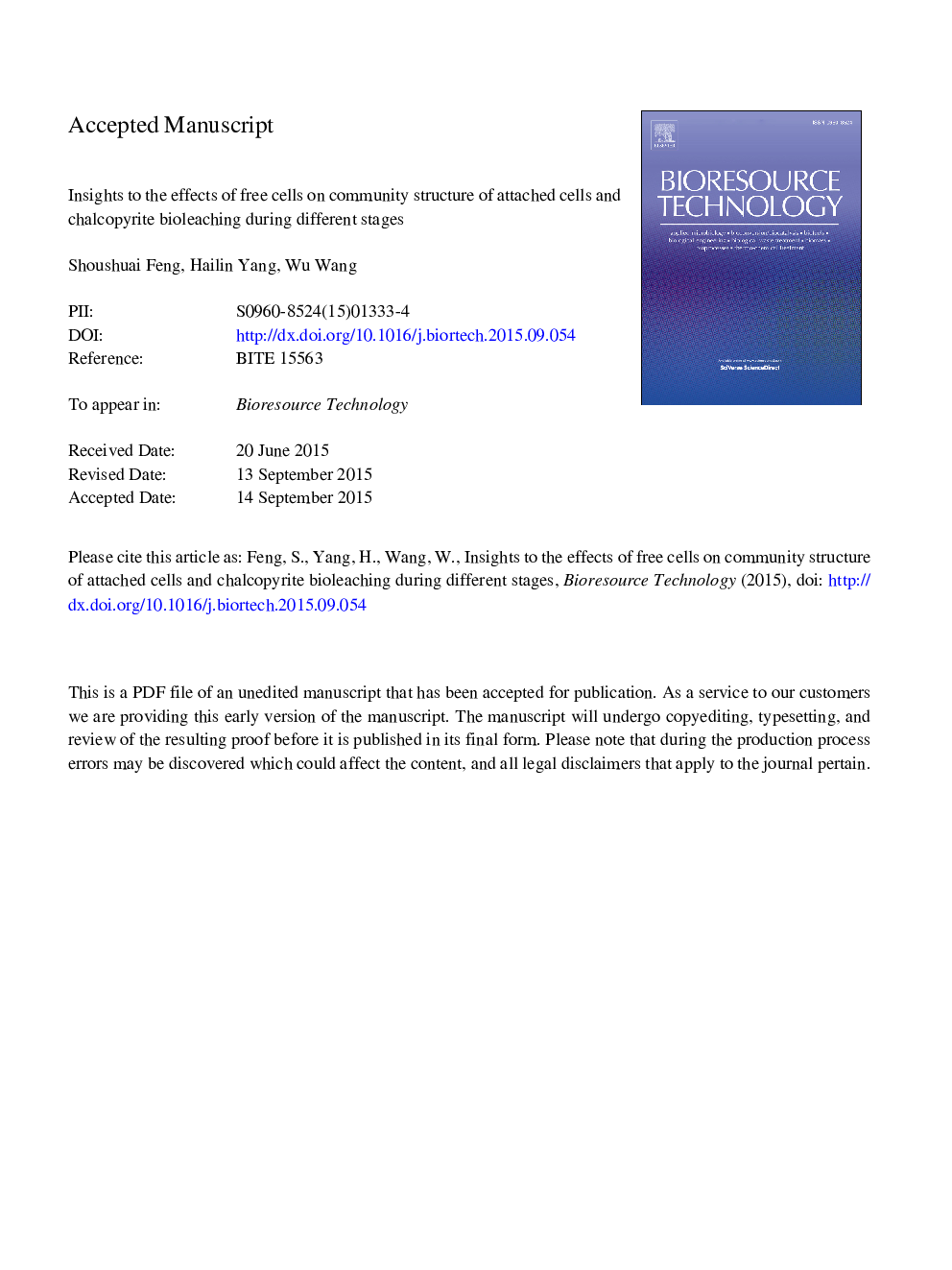| Article ID | Journal | Published Year | Pages | File Type |
|---|---|---|---|---|
| 7073032 | Bioresource Technology | 2016 | 30 Pages |
Abstract
The effects of free cells on community structure of attached cells and chalcopyrite bioleaching by Acidithiobacillus sp. during different stages were investigated. The attached cells of Acidithiobacillus thiooxidans owned the community advantage from 14th d to the end of bioprocess in the normal system. The community structure of attached cells was greatly influenced in the free cells-deficient systems. Compared to A. thiooxidans, the attached cells community of Acidithiobacillus ferrooxidans had a higher dependence on its free cells. Meanwhile, the analysis of key biochemical parameters revealed that the effects of free cells on chalcopyrite bioleaching in different stages were diverse, ranging from 32.8% to 64.3%. The bioleaching contribution of free cells of A. ferrooxidans in the stationary stage (8-14th d) was higher than those of A. thiooxidans, while the situation was gradually reversed in the jarosite passivation inhibited stage (26-40th d). These results may be useful in guiding chalcopyrite bioleaching.
Related Topics
Physical Sciences and Engineering
Chemical Engineering
Process Chemistry and Technology
Authors
Shoushuai Feng, Hailin Yang, Wu Wang,
